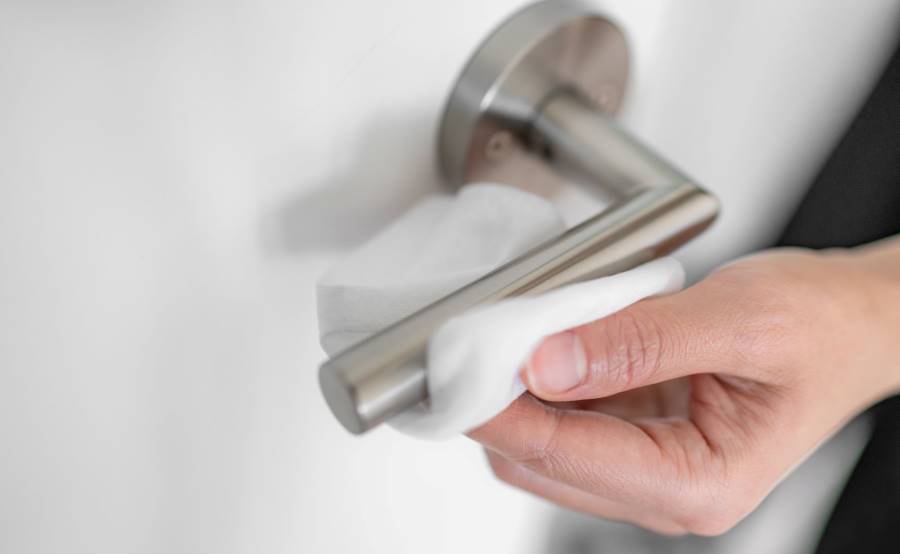
Temporary out of stock – most of us experienced the situation standing in front of an empty supermarket shelf early last year. So, what does the COVID-19 toilet paper shortage tell us about supply chains and production? The situation in 2020 was not a regional problem: the lockdown led to a global toilet paper shortage. Initially, the issue was due to stockpiling at the beginning of the pandemic crisis. However, consumption and consumer behavior have been impacted by the pandemic as well.
Changed consumer behavior
It is estimated that the consumption of tissue products increased around 40% towards pre-pandemic times. Consumers increasingly prefer disposable paper products such as kitchen towels, paper napkins, and other sanitary paper products. It is expected, that the increasing demand for hygiene and tissue products will be rising steadily as long as COVID-19 is around. This results in significant growth in market size, driving the need to bring tissue production to the next level. As manufacturers had to produce and sell more, production lines had to work at full capacity, but there are more challenges to be addressed that have an impact on the production process itself.

Tissue products and non-woven hygiene products are manufactured in great volumes
The tissue industry includes many different tissue products for both home care and professional use. Toilet paper, paper towels, and kitchen towels as well as paper products for offices, hotels, and workshops, are just a few examples. The shift in consumption from professional use to private use demonstrates the significance of a flexible production line. Also, non-woven hygiene products are included in the tissue industry, such as diapers and feminine care products. Common for the tissue industry as a whole is the high production flows. The products are manufactured in big volumes, which require effective production processes with high levels of automation.
The manufacturing process differs depending on the product’s complexity
The manufacturing processes in the tissue industry differ depending on the product. A diaper, for example, is a complex product that requires a complex manufacturing machine. In order for a diaper to be comfortable, it needs to consist of many different materials, be easy to put on as well as absorb fluid without causing leakage. To manufacture toilet paper, on the other hand, does not require an equally advanced machine. However, both products are manufactured in high production flows of about 1200 to 1500 products per minute. After the products have been manufactured, the packaging processes look basically the same for all products in the tissue industry.
Production equipment adjusted to a dusty environment for a longer lifespan
Production lines in the tissue industry need to be flexible in order to manufacture products in various sizes and shapes and maintain the high quality of the products. The production equipment must have high reliability to maintain the high production flows required in the tissue industry. Ideally, a manufacturing machine operates non-stop, and that puts high demands on the machines downstream, such as the packaging machines. A fault on the packaging machine should be addressed without having to impact the speed of the manufacturing machine. This requires highly flexible and automatically controlled production flows.
Many factories in the tissue industry manufacture several different products with various qualities and characteristics in the same production line. The products are often light, soft, and sensitive and can be damaged if not handled properly. Therefore, the production lines in the tissue industry need to be flexible in order to manufacture products in various sizes and shapes and maintain the high quality of the products. Also, the production equipment needs to maintain high production speed when switching from one product to another in order to meet the high market demands. One of the challenges in the tissue industry is handling a large amount of paper dust coming from the products. There is always a risk that the dust gets caught in the production equipment, which may affect the equipment in a negative way. So, in order to extend the lifespan of the equipment, it needs to be adapted to a dusty environment.
Fewer and shorter conveyors increase efficiency in the production plant
To facilitate the production in the tissue industry it is important to use well-proven equipment and adapt the layout of the production line according to the production plant’s needs. Throughout history, there has been quite a lot of conveyors and production equipment in the tissue industry. The industry’s development has brought different technical developments such as faster manufacturing machines. However, the packing machines have not developed at the same pace, which has lead to a need for more packaging machines in order to handle the high production flows. Consequently, more conveyors have been added in order to connect the machines together. Today, the packaging machines are more flexible and have higher capacity than before. As a result, the current trend goes towards fewer and shorter conveyors in the tissue industry.
Adapt automated tissue production flow solutions
The tissue industry has a bright future due to the ever-increasing demand from consumers. Europe and the US are at the top of the list of countries with the largest paper consumption per capita and the need for diapers is increasing in several parts of the world (Source: Statista). There is a strong need to increase efficiency in the production plants and change old production equipment to new, smart automation systems. FlexLink designs automated production flow solutions that create a flexible and balanced production flow in the tissue industry. Our solutions are adapted to the dusty environment and enable cleaning of the equipment without having to disassemble it. We assist in upgrading old production systems as well as help design and develop new ones. The pandemic has proved once more, the demand for tissue products will never fade and we are here to make sure the supply never does either!
Would you like to know more about our solutions or the other industries we work with? Visit our website and follow us on LinkedIn for more information.




Leave a Reply